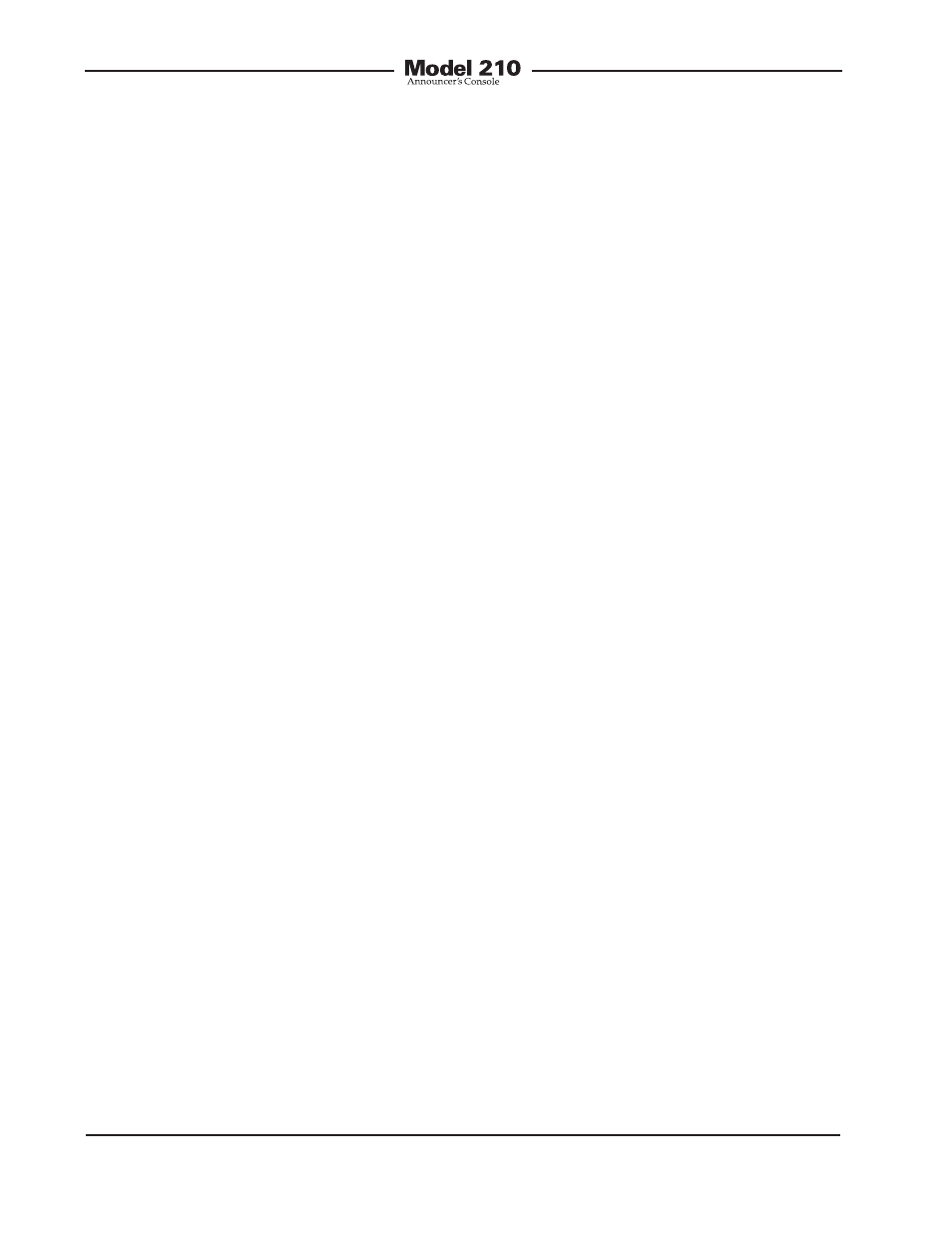Audio quality and protection, Power sources, Relay contact – Studio Technologies 210 2012 User Manual
Page 8

Issue 5, September 2012
Model 210 User Guide
Page 8
Studio Technologies, Inc.
they can be selected to the dual-channel
(“level/level”) mode which provides
independent control of the left- and right-
channel volume. For use with dual-
channel cue signals, or to support user
preference, the stereo (“level/balance”)
mode can be selected. In this mode one
control adjusts the overall level of both
the left and right channels, while the other
allows adjustment of the left/right level
balance. To help minimize the chance of
broadcast cues being missed, both level
control modes can be configured so that
a minimum headphone output level is
maintained. Alternately, the headphone
output can be set to fully mute when the
controls are at their minimum position.
Provision has been made to support ap-
plications where a monaural cue feed is
desired. A configuration switch allows the
summing (combining) of the selected left
and right headphone sources. In addition
to creating a dual-channel mono output it
also allows the level controls to be config-
ured as a simple 2-channel mixer.
The headphone output was designed
to meet the needs of contemporary head-
phones and headsets. Specifically, the
output circuits act as voltage, rather than
power, drivers. In this configuration they
can provide high output levels with very
low distortion and noise, along with mini-
mal current consumption. The output cir-
cuits are configured to safely drive stereo
or mono loads. This ensures that all types
of headphones, headsets, and earpieces
can be directly connected.
Audio Quality and Protection
The Model 210’s circuitry is carefully
tailored to provide excellent audio perfor-
mance. Professional-quality components
are featured throughout. For reliability
all audio routing is performed using solid-
state devices. In all critical audio paths,
“clickless” electronic switches provide
noise-free control. All audio inputs and
outputs make extensive use of protection
components. This limits the chance of
damage from ESD and other undesirable,
yet real-world, hazards.
Power Sources
The Model 210 can derive its operating
power from either the IFB input or an
external nominal 24 volt DC source. For
redundancy, both power sources can be
connected simultaneously. An internal
switch-mode power supply ensures that
all Model 210 features are available when
the unit is powered by either source.
The Model 210 is compatible with IFB
circuits provided by most standard broad-
cast systems. However, maximum perfor-
mance can often be obtained by using the
IFB interface devices available from Studio
Technologies. Single-channel and four-
channel units are available, each providing
high-quality audio along with an excel-
lent source of DC power. They’re directly
compatible with most matrix intercom sys-
tems, as well as standard line-level audio
signals. Refer to the Studio Technologies
website for details.
Relay Contact
The Model 210’s circuitry includes a
general-purpose relay contact allowing
specialized configurations to be created.
Under software control, the form-A (nor-
mally open) solid-state relay contact can
be configured to follow the state of either
the main or talkback output functions.
Taking advantage of the locations pro-
vided for additional XLR connectors, a
technician may easily implement a variety
